“Making life better”—it’s the credo synonymous with JG Summit Holdings. Customer-centricity has long been one of the driving forces behind the conglomerate’s operations, and this means looking out for the best interests of the people. So, it goes without saying, the drive to please includes its internal customers who make up its workforce.
Beyond providing its employees with fair and proper compensation, delivering government- mandated benefits and requirements, and keeping the workplace environment healthy and safe, the company constantly seeks ways to make its employees’ lives simpler yet more productive and more fulfilling.
In 2019, a dedicated Employee Experience team was formed to fulfill that mandate. Headed by Marco Padernal from JG Summit’s Corporate Human Resources, the core team includes JC Sioson, Application Manager; Jennifer Meña, Project Manager; Donelle Gan, Enterprise Architect; Rowena Romano, Technical Project Manager; and Cindy Vasquez, Customer Experience Officer, all from the Digital Transformation & Corporate Services (DTCS) group; with Kai Blanco, Employee Experience Officer; Anisa Enriquez, Content Engagement Officer; and Ruby Lucilla, Technical Project Manager, all representing Corporate HR.
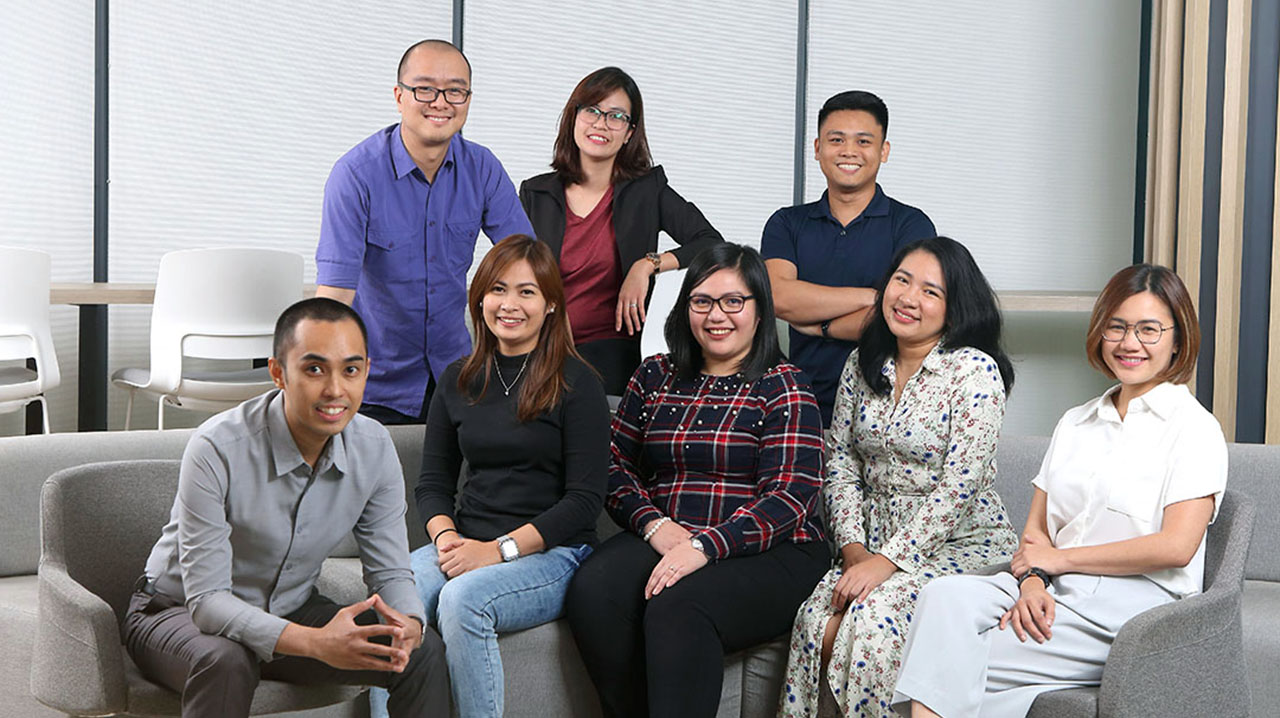 The JG Summit Employee Experience Team. Front row, from left: Marco Padernal, Director, Employee Experience, Corporate HR; Cindy Vasquez, Customer Experience Officer, DTCS; Anisa Enriquez, Content Engagement Officer, Corporate HR; Kai Blanco, Employee Experience Officer, Corporate HR; Jennifer Meña, Project Manager, DTCS. Back, from left: Donelle Gan, Enterprise Architect, Rowena Romano, Technical Project Manager; and JC Sioson, Application Manager, all from DTCS. (All team photos in this article were taken before the COVID-19 outbreak.) IMAGE Migs Castro
The JG Summit Employee Experience Team. Front row, from left: Marco Padernal, Director, Employee Experience, Corporate HR; Cindy Vasquez, Customer Experience Officer, DTCS; Anisa Enriquez, Content Engagement Officer, Corporate HR; Kai Blanco, Employee Experience Officer, Corporate HR; Jennifer Meña, Project Manager, DTCS. Back, from left: Donelle Gan, Enterprise Architect, Rowena Romano, Technical Project Manager; and JC Sioson, Application Manager, all from DTCS. (All team photos in this article were taken before the COVID-19 outbreak.) IMAGE Migs Castro
Now that the entire conglomerate is adapting to the seismic changes brought about by the ongoing health crisis, it’s become apparent that the role of the Employee Experience team will be even greater than originally envisioned, as it will be vital in helping the JG Summit workforce navigate their way through these turbulent times.
CAUSE & EFFECT
Before the team was officially formed last year, company management wanted the CHR and DTCS groups to determine how existing processes and employee touch-points could be improved. To figure out where to begin, Vasquez relates: “We did interviews, we listened to the customers, our fellow employees. We tried to understand what their behaviors are, what their motivations are. We also tried to determine the culture of the company. Once we listened to the sentiment, or the voice of the employees, we were able to determine what their pain points are, what their specific needs are.”
According to Padernal, it became evident that employees had three main concerns. “The first is that there are some basic things that aren’t easy for them to process or to request. Whether there are too many paper/manual processes to go through or too many steps for approval, it eats up their productive time. Instead of working, they have to keep following up, asking for the status of their request.
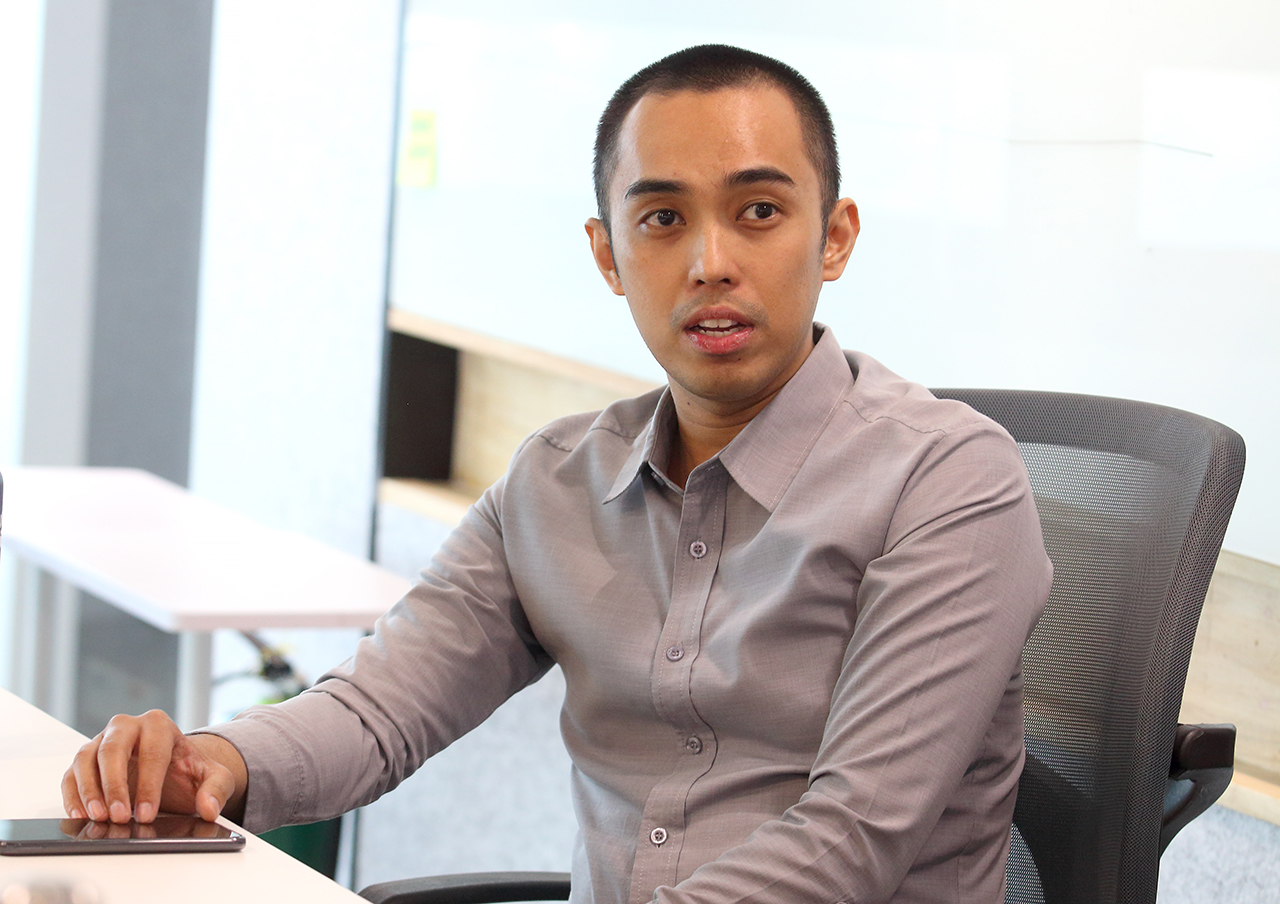
“The second theme that surfaced is in terms of information; it’s not centralized, so they need to ask around who to email, who to contact, who to ask for different types of needs. The third request is for a platform, an avenue for them to provide continuous feedback, to serve as an input—probably to management—for the improvement of internal processes and the overall employee experience.”
Seeing how addressing these concerns in a timely manner would be a complicated task, a dedicated, cross-functional Employee Experience team was assembled.
Working in close consultation with Aspen Business Solutions, a multi-industry, shared services provider that is also part of the JG Summit conglomerate, the Employee Experience team began looking into improving or transforming internal processes and platforms for the employees’ benefit.
QUICK RESULTS, CONSTANT IMPROVEMENT
“Our work is not just transforming the lives of the employees, but also helping the culture and the conglomerate transform from its traditional ways into a more modern, more agile environment,” says Meña, talking about the group’s ways of working, which is directly influenced by the Agile methodology espoused by the Digital Transformation & Corporate Services department.
Popular among software developers, the Agile method employs continuous iteration and testing in the development process, with development and testing done practically at the same time. It’s the polar opposite of the more traditional Waterfall methodology, where solutions are tackled step-by-step in a deliberate, linear fashion. While it works well for simple or small-scale problems, the Waterfall method is not as successful when solving complex, multi-layered problems. The testing process only begins once product development ends; because of this, if problems are found, you often have to repeat the entire process. “In agile, the pillars are transparency, collaboration, iteration, and adaptability,” explains Meña. “Instead of immediately going for ‘big bang’ solutions, we went for incremental improvements, doing experiments with small groups in the conglomerate.”
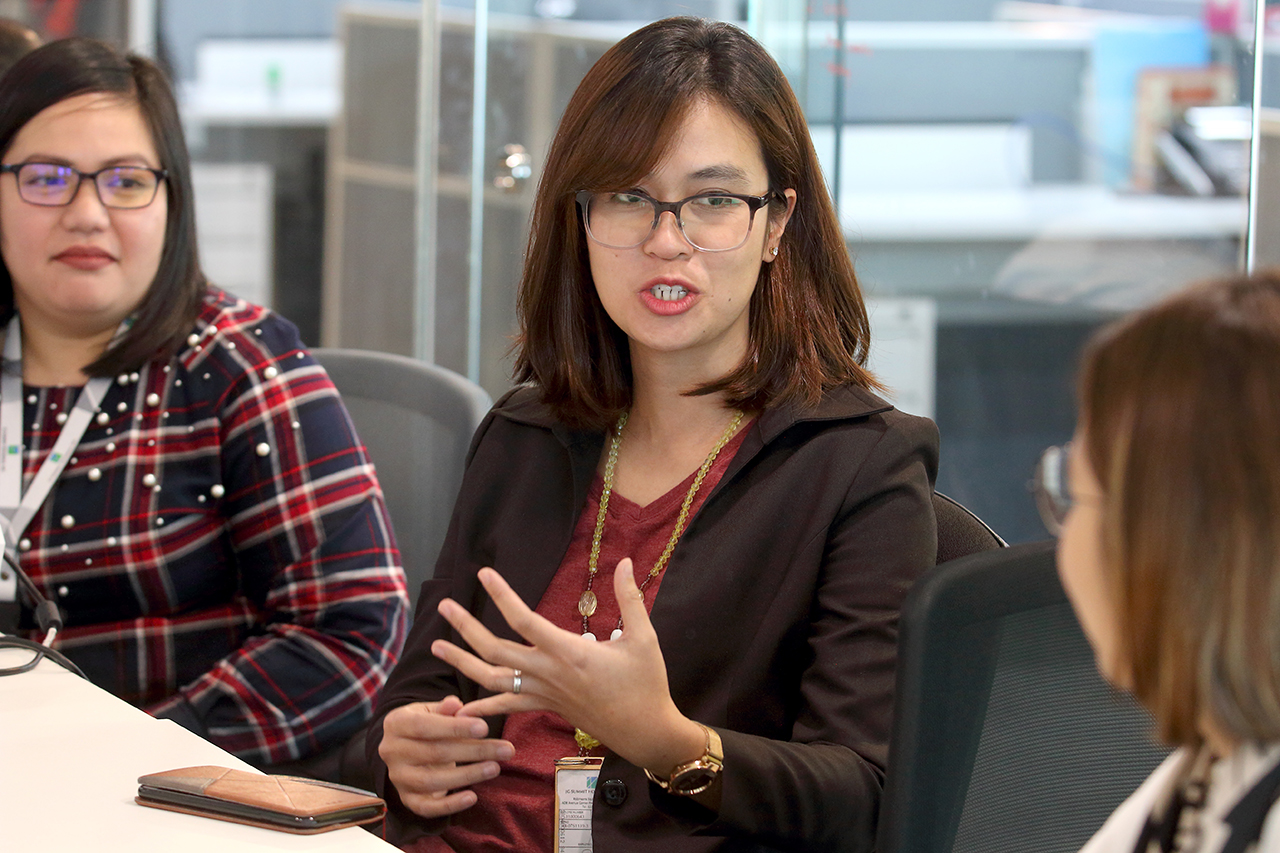
For many on the team, it was their first time working in a big cross-functional group. Romano immediately saw the benefits. “Working in a team whose members specialize in different fields, for me, it’s the ideal team, the A-team. We have content managers, user experience and user interface specialists, developers, tech people, and HR experts, and things get done fast.”
“Being in a cross-functional group, you feel you have more firepower because you aren't focused on one discipline,” says Padernal. The team members complemented each other’s strengths. When improving some HR functionalities in the online portal, for example, the HR practitioners on the team relied on the IT specialists to develop the code and refine the user experience, while the DTCS team guided them in the stages of development, also known as sprints.
The mindset of collaboration permeated the group’s work and managing egos was never an issue, says Padernal. To build bonds within the group, he encouraged members to spend time together and have fun even outside of work. The approach has worked well so far. “We don't care about the job levels of the people on this team, and we don't care about the job descriptions of each person. There's IT, there’s DTCS, and there's HR, but everyone’s opinions or suggestions were always taken into consideration, regardless of what area we specialize in.”
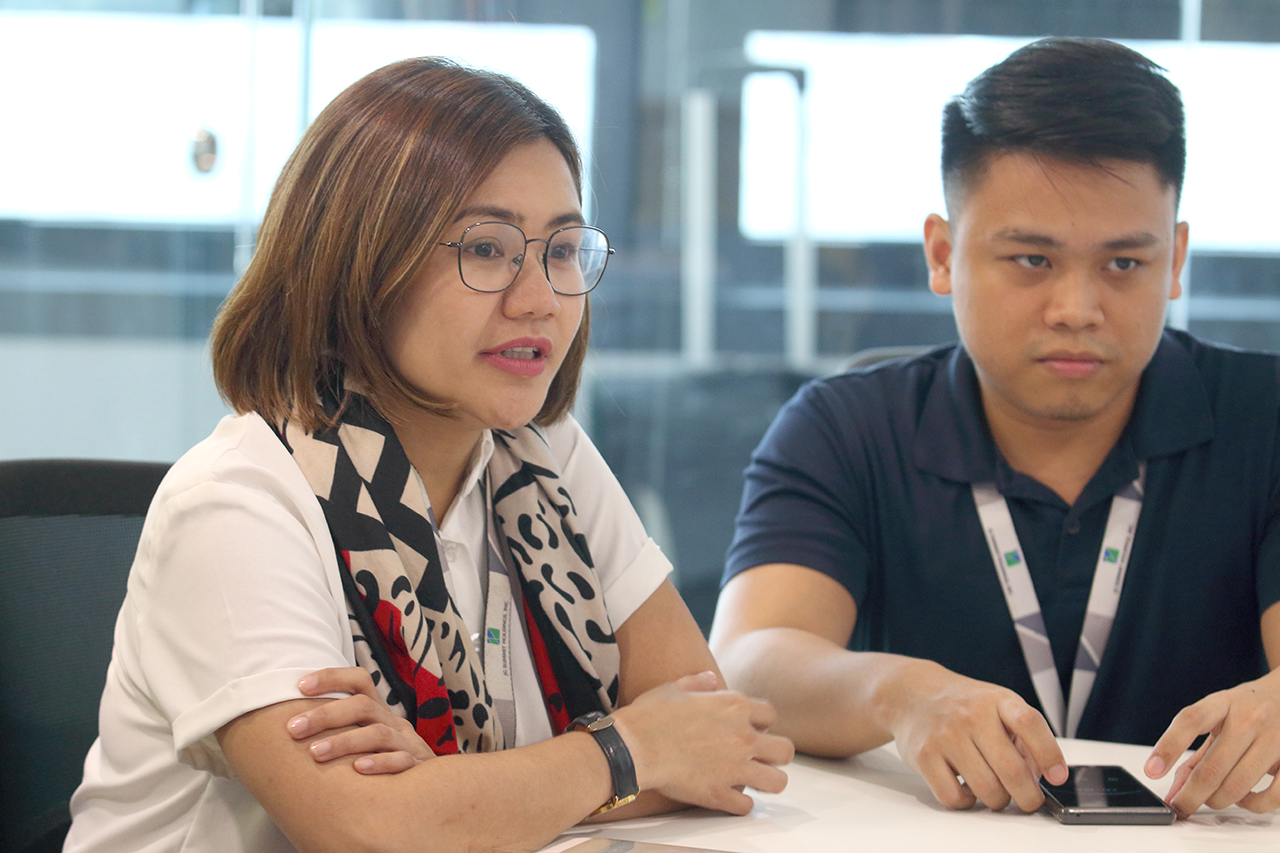
Meña agrees. “We work very collaboratively, so it is self-organizing. We don’t think ‘This is my role, so this is the only thing I'll do.’ We do more than what is expected, that's the culture we built in the team. I think that's why the project has been successful.”
When the conglomerate shifted to a Work From Home scheme during the enhanced community quarantine period, the team easily adapted. “We think that our camaraderie and strong teamwork even before the ECQ helped in transitioning to this challenging situation. There are factors that are different when meeting remotely, such as the absence of facial expressions in calls where the video is not on, but since we know each other’s tendencies, we can still get along,” says Padernal.
In terms of workflow, the team was already well versed in using tools such as Microsoft Teams and other online file sharing/collaboration programs. In some cases, the WFH setup proved even better than being in the actual office. The team says, “We noticed on some occasions that alignment with various groups we work with has been quicker because everyone can easily be reached digitally, instead of in the past wherein you need to get everyone’s availability, book a conference room, and have a physical meeting with the stakeholders.”
THE RESULTS ARE IN
The improved JGS Employee Service Portal was first rolled out to select business units in December 2019, and the feedback has been comprehensively positive. Perhaps that shouldn’t be a big surprise, given that the system was tailor-made for their needs.
“Our guide when making this were the needs of the employees. What they wanted on the site, how they wanted the layout, the services in portal—our bosses on this were the employees,” says Padernal.
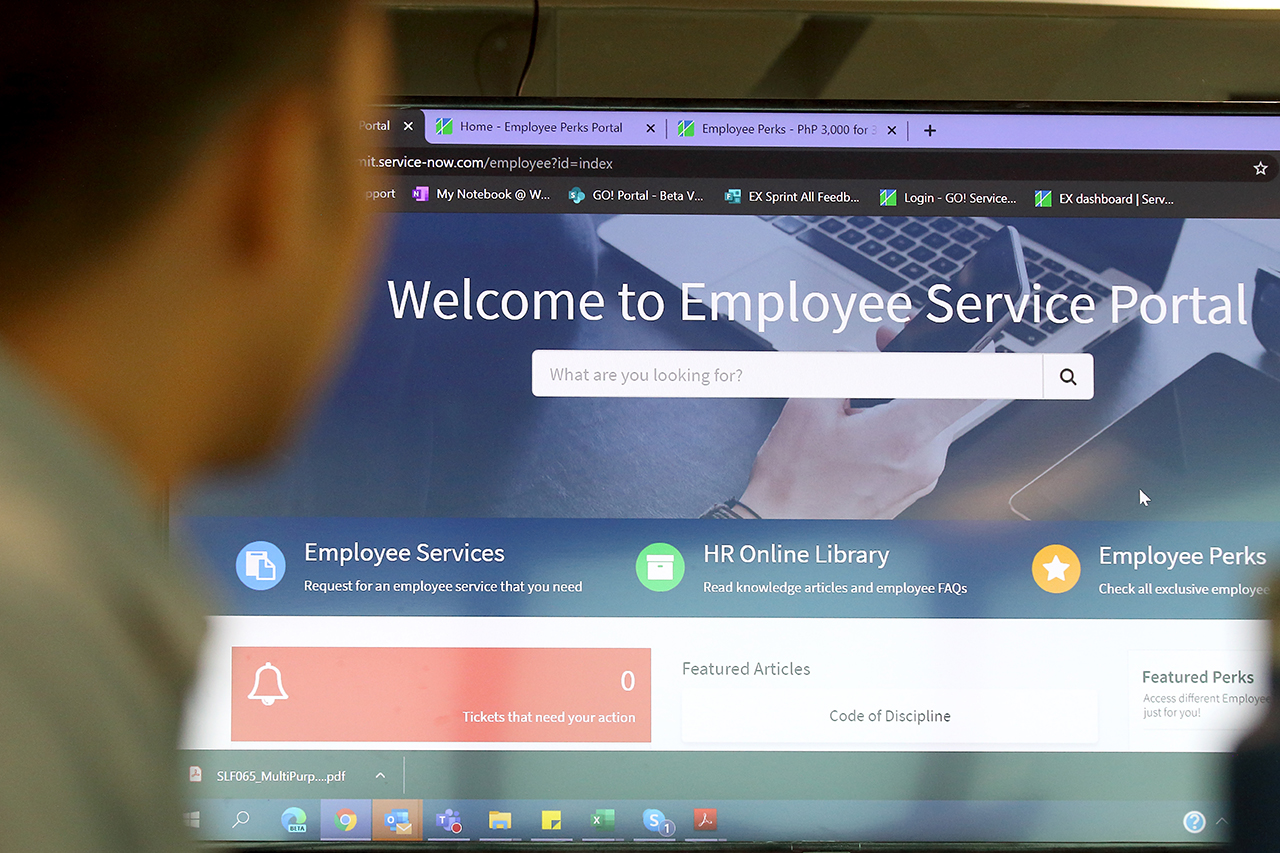
According to Gan, the new system was built on the commercially available ServiceNow platform, but customized with the user interface developed in-house by members of the team. Going through the early feedback that employees have provided, Gan is elated. “One of the most common things we see is that people are very appreciative. Processes that used to take a very long time before, have become very easy, very convenient. I'd like to think that at the end of the day, everything we're doing is about making employees’ lives better. Making their day-to-day experiences better.”
Intuitiveness and ease of use were key in garnering positive feedback, says Enriquez, one of those chiefly responsible for the portal’s user interface and content. “We try to make it appear that the portal is conversing with the employee. We made use of FAQ’s, so there's a question and here's your answer, and we tried to simplify the words because when writing the articles and the content, aside from working with the different employee groups to gather the pain-points information, I tried to put myself in the shoes of an employee. I made sure that the words are simple, it's easy to navigate so that it won't add to the confusion. We also put pictures when they’re needed.”
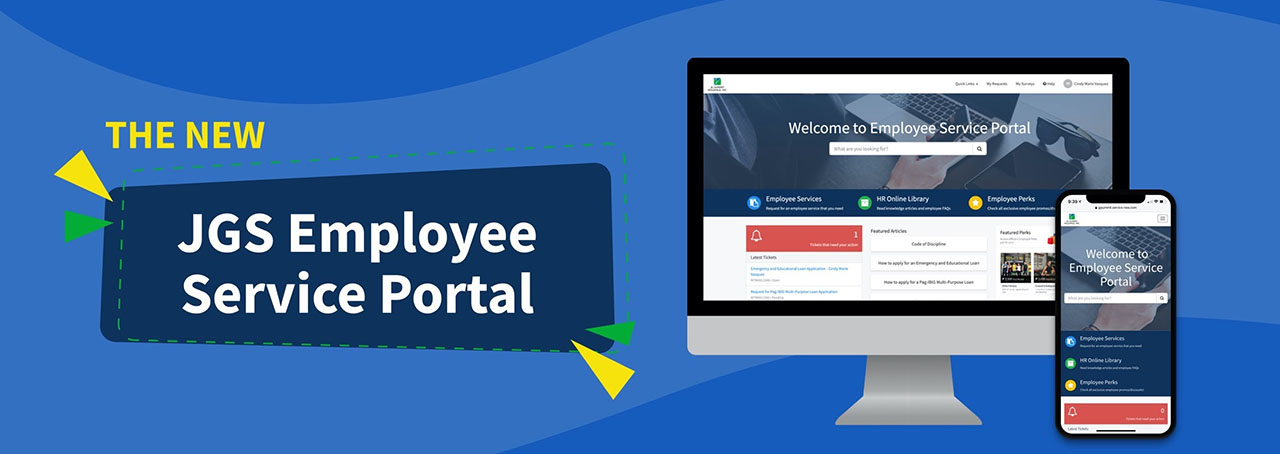
Sioson adds that ensuring ease of use trickled down to where the portal could be accessed, whether it’s on workstation computers, tablets, or on mobile phones. “Instead of asking employees to download another app on their phone, we designed the portal so that it can be accessed by any phone, as long as it has a web browser.”
Another feature appreciated by the employees was the HR online library, an online collection of various HR procedures and policies. Based on the team’s data, employees are curious about applying for loans and learning about the different perks offered to JG Summit staff, such as discounts on Robinsons Land properties and hotels, and promos for restaurants or gym memberships.
Sioson relates that when the new Employee Portal was being presented to some business units, it resonated greatly with employees, and they enthusiastically gave suggestions on further functionalities that would be of help in their work. The EX team listened and as a result, more features will be rolled out soon. “Employees can look forward to requesting their certificates of employment online, as well as being able to provide feedback on employees’ adherence to Company policies as a means to help ensure good Corporate Governance.” says Padernal. “Everything will be in one central location, following the Employee Experience roadmap.”
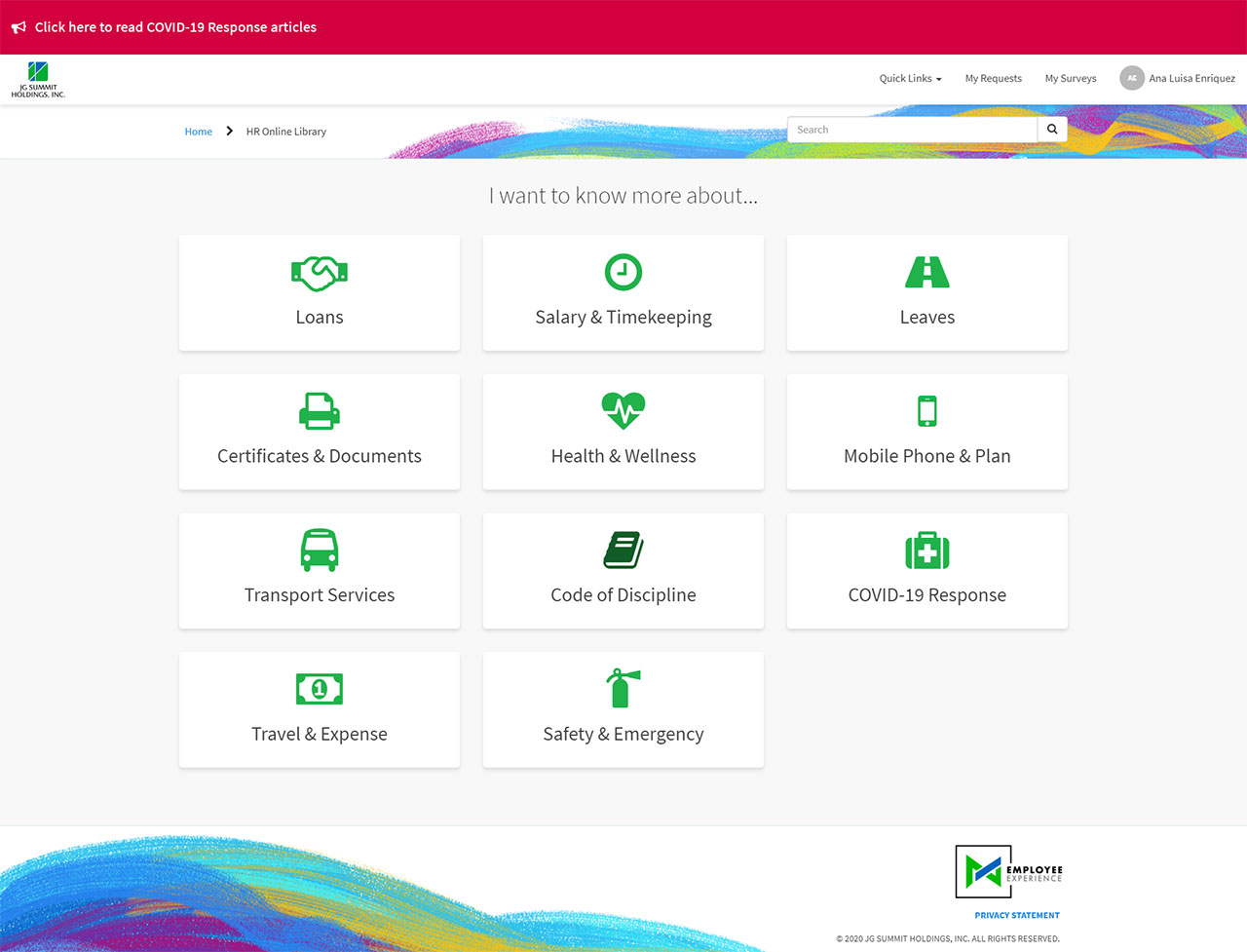
Employees who’ve used the new portal have marveled at how simple it is to process services, including requests for emergency and educational loans, PhilHealth documents, SSS loans, Pag-IBIG Multipurpose loans, maternity notifications and reimbursements, and SSS Sickness Benefit claims. Where filling up printed forms by hand was previously the norm, the portal has digitalized those steps. The portal has also eliminated an employee pain point—figuring who to contact for a particular service—as this is all determined by the digital front end. “You don’t need to know who the processor is, as long as the service is offered on the portal, you just need to file a ticket, and that’s it,” says Padernal.
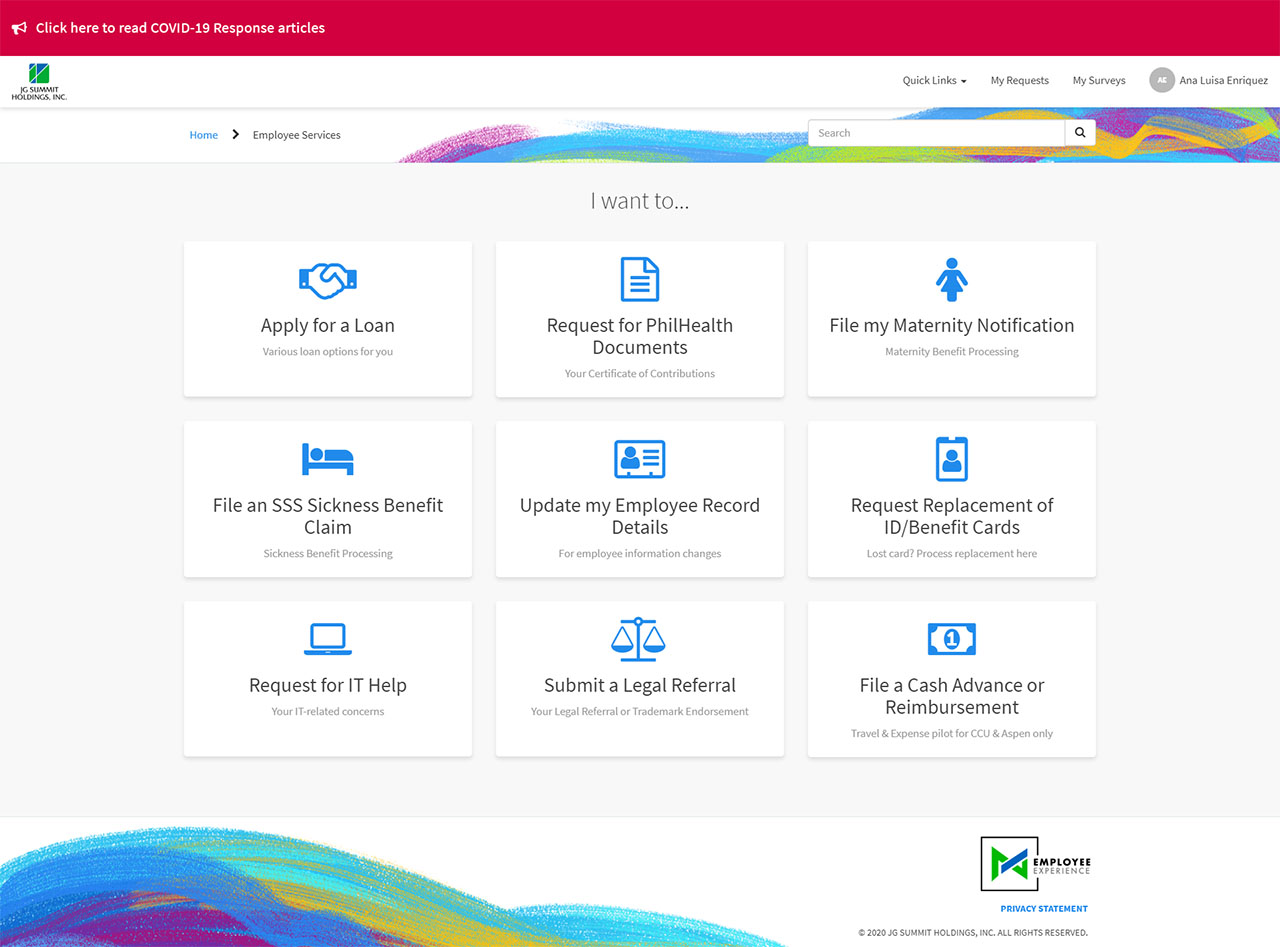
Gan adds, “Previously the services were very ad hoc, meaning you don't really know how much time it takes to process, how much waiting time there is. One of the things that we introduced was to basically meter everything. We know how fast exactly it takes, down to the minute, to actually fulfill some of these basic requests. We want to make sure that the customer experiences are delivered consistently and fast.”
Every time a service request is completed, employees are asked for feedback on their experience and how the service can further be enhanced—it’s all part of the agile iteration process.
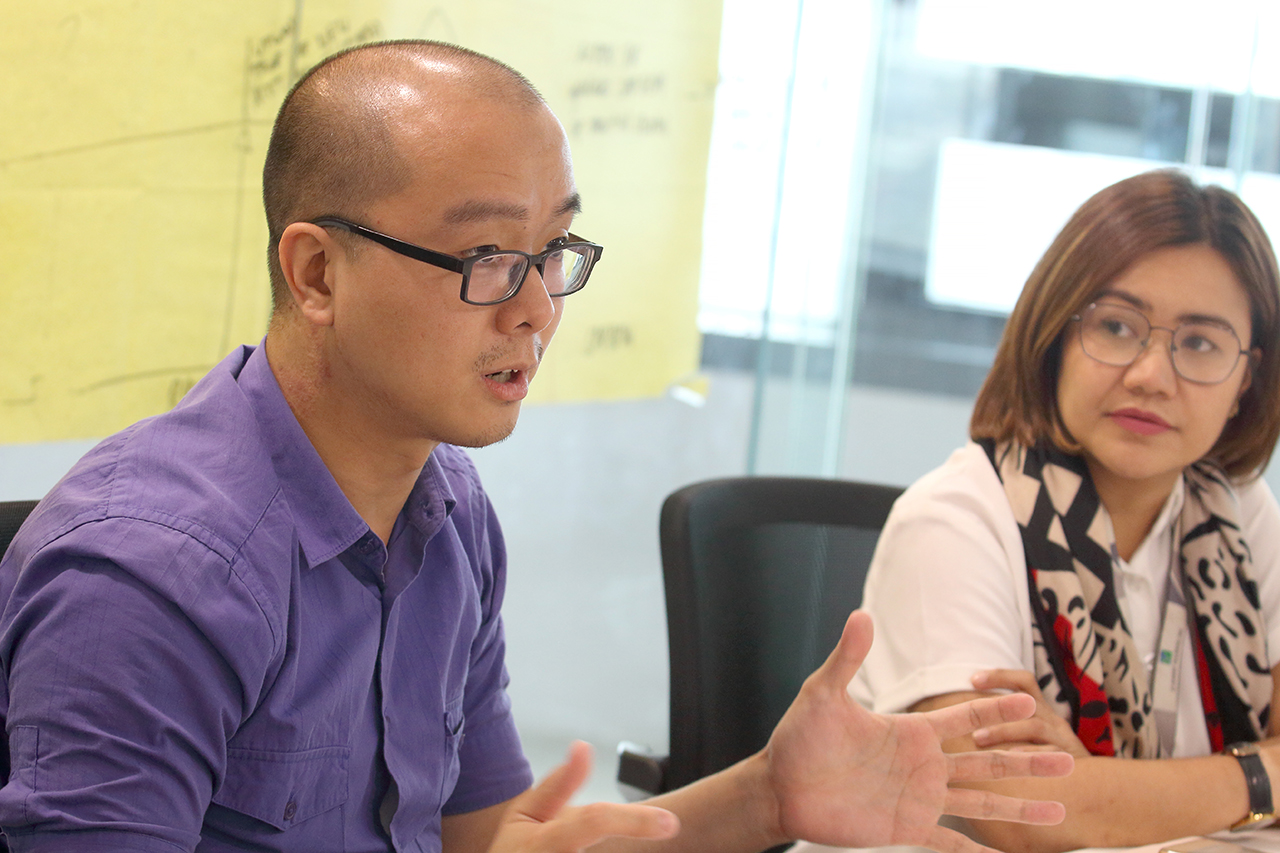
As you might have guessed, this constant iteration went on even during the ECQ period, spurred by emerging concerns that the conglomerate’s employees now face. Quoting a recent mercer.com article on the impact of crisis situations like the pandemic on the workforce, Padernal says it’s become a “‘defining moment of one's life and career,’ and what employees need to have right now is a positive employee experience.”
The EX Team has been able to provide this through the following ways:
- By being able to communicate and connect with the employees, providing up-to-date and relevant information on COVID-19, current company plans, and the like.
- By providing an avenue for employees to voice out their thoughts, feelings, and needs via the Work Environment survey, which was released digitally conglomerate-wide.
- By pushing though the digitalization of processes for smooth and swift transactions without the need to physically contact someone.
Just as the group’s previous surveys were essential in improving the Employee Service Portal, the Work Environment survey turned out to be highly significant in crafting the company’s response to the crisis. “We utilized a digital platform to get feedback from employees on the assistance they need and concerns they would like to raise to our leaders during these times. Because of the digital approach, we were able to immediately provide feedback to our leaders, including the Excom and the SBU HR heads. The employee feedback we gathered became a major input to the plans of the various SBUs. During these times it is important to ‘Lead with empathy through listening,’” says Padernal.
A good example of this was how the EX team was able to quickly tweak the Employee Service Portal’s Online Emergency & Educational Loan workflow to make it even easier to use, especially now that more employees are planning to obtain loans. The portal’s information library on COVID-19 was also highly appreciated by the conglomerate’s workforce. “We needed to create a category dedicated to all COVID-19 related articles so that employees could easily look for it, since our communications to employees on this topic increased. We made this archive of all COVID-19 related items readily accessible from the homepage.”
As the conglomerate eases into the “new normal” of working, the EX Team will have several new systems in place. These include an online Daily Health Monitoring system via QR Code as part of the re-entry strategy; an integrated MyProfile Page and Online Data Change Request facility; and the creation of an Online Workplace & Facilities request system.
Regarding the health monitoring system, Padernal explains, “DOLE guidelines require employees to fill up a paper checklist and submit it to the building security staff prior entry to the work area. What we did was digitalize the process so that an administrator can view responses remotely in real-time, and also save on paper.”
The second item on the list allows the integration of the Employee Service Portal with the back-end employee database (SAP) to be able to reflect key employee details of the employee digitally. Through this, Padernal says, “The employee can remotely raise data changes in his/her profile and just attach soft copies of documents, instead of routing hard copy supporting documents.”
Finally, as part of the re-entry work protocols, facilities-related concerns, such as cleaning/disinfecting requirements in the workplace, repair or service requests, and the like, will be handled through a ticketing system.
Even in the new normal, one thing is for sure: the EX Team will continually strive to make things better. As Padernal says, “This project will never end. There will always be room for improvement.”
For JG Summit Employees, that’s very good news.


